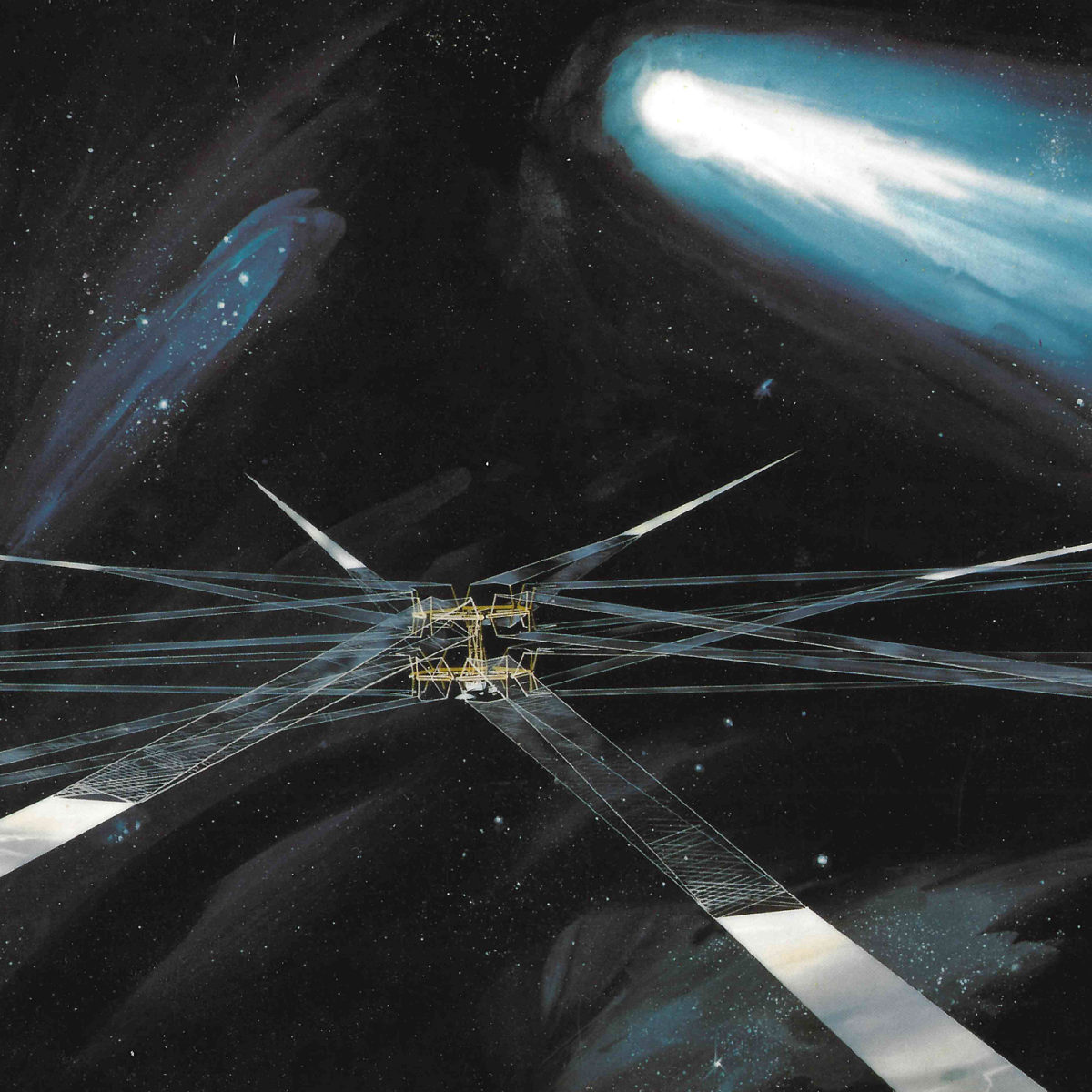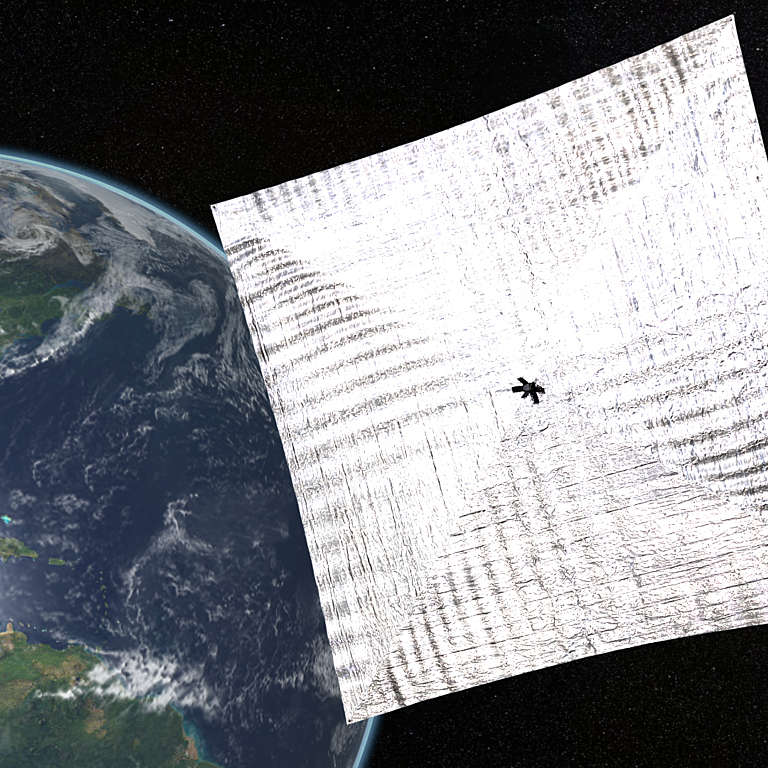The Story of LightSail, Part 2
This article is adapted from a chapter in Louis Friedman’s book, Human Spaceflight: From Mars to the Stars.
Carl Sagan, Bruce Murray, and I formed The Planetary Society in 1980 to prove and harness the popular interest in planetary exploration—a great government enterprise that was in danger of being discontinued. The means to prove public interest was a membership organization where interested people could both get information about and feel involved in planetary exploration. We produced a beautiful magazine,The Planetary Report, with the latest pictures from other worlds and well-written popular articles by scientists involved in planetary exploration. In the pre-Internet age, access to firsthand information and the images from space missions were hard to get and not generally available.
When our business consultants told us that membership dues alone wouldn’t create much of an organization and that we had to have worthy projects that could both engage public interest and attract large donations, we responded immediately with the idea that we could fund novel experiments and new ideas that would seed the big projects of the future. Our first project was private funding for the Search for Extraterrestrial Intelligence (SETI), required after the U.S. Congress belittled NASA’s program and cancelled its funding. Another early effort was to fund a technique to discover extrasolar planets—more than a decade before the first one was discovered. We also funded a pilot demonstration of in situ propellant production for a putative Mars sample return mission and tested a novel balloon concept for flying long distances at low altitudes on Mars—all in the early 1980s. 1
All of these early projects were Earth-based. I remember one conversation with Sagan in which he mused about whether it would ever be possible to actually create our own space-based project, an experiment onboard a spacecraft, or perhaps even our own mission pushing the technical and discovery limits for space exploration. We thought it might be possible—and by the 1990s it was. In that decade, we managed to get a small radiation-measuring payload on the Pathfinder mission landing on Mars and a microphone on the Mars Polar Lander, which sadly crashed on the Martian surface in 1999. These were the first two privately funded experiments to go to another planet.
Sagan and Murray were also solar sail enthusiasts. Carl wrote a hugely popular article about solar sails in Parade magazine, the most widely read magazine in the United States. Bruce led advocacy for their development when he made them and the Halley Comet mission possibility one of his purple pigeons2 at JPL. And, of course, I was an enthusiast—after all, as Bruce would keep saying, “He wrote the book.” But, as visionary as we could be, we were mission realists and were not into chasing pipe dreams just for the love of technology. We saw no opportunity real enough to push our own role in solar sailing.
Carl tragically and prematurely died in 1996. In 1999, our Russian colleagues came to us with an offer too good to refuse. They could provide a free launch and a very-low-cost approach for a solar sail development piggybacking on an inflatable structure they were building for a re-entry shield. With Bruce’s support, and that of The Planetary Society’s board of directors, we assembled our own U.S. team to critically examine and develop their idea and produce a cost estimate that we hoped might be affordable and appealing to the members of the society. Thus was born Cosmos 1—the world’s first solar sail spacecraft.
The “free launch” was a result of the post–Cold War desire to use (and perhaps, commercially market) intercontinental ballistic missiles stripped of their nuclear bomb payloads to launch satellites into orbit. The Russians offered us the Volna (Wave), a submarine-based ICBM to take a solar sail spacecraft to orbit.3
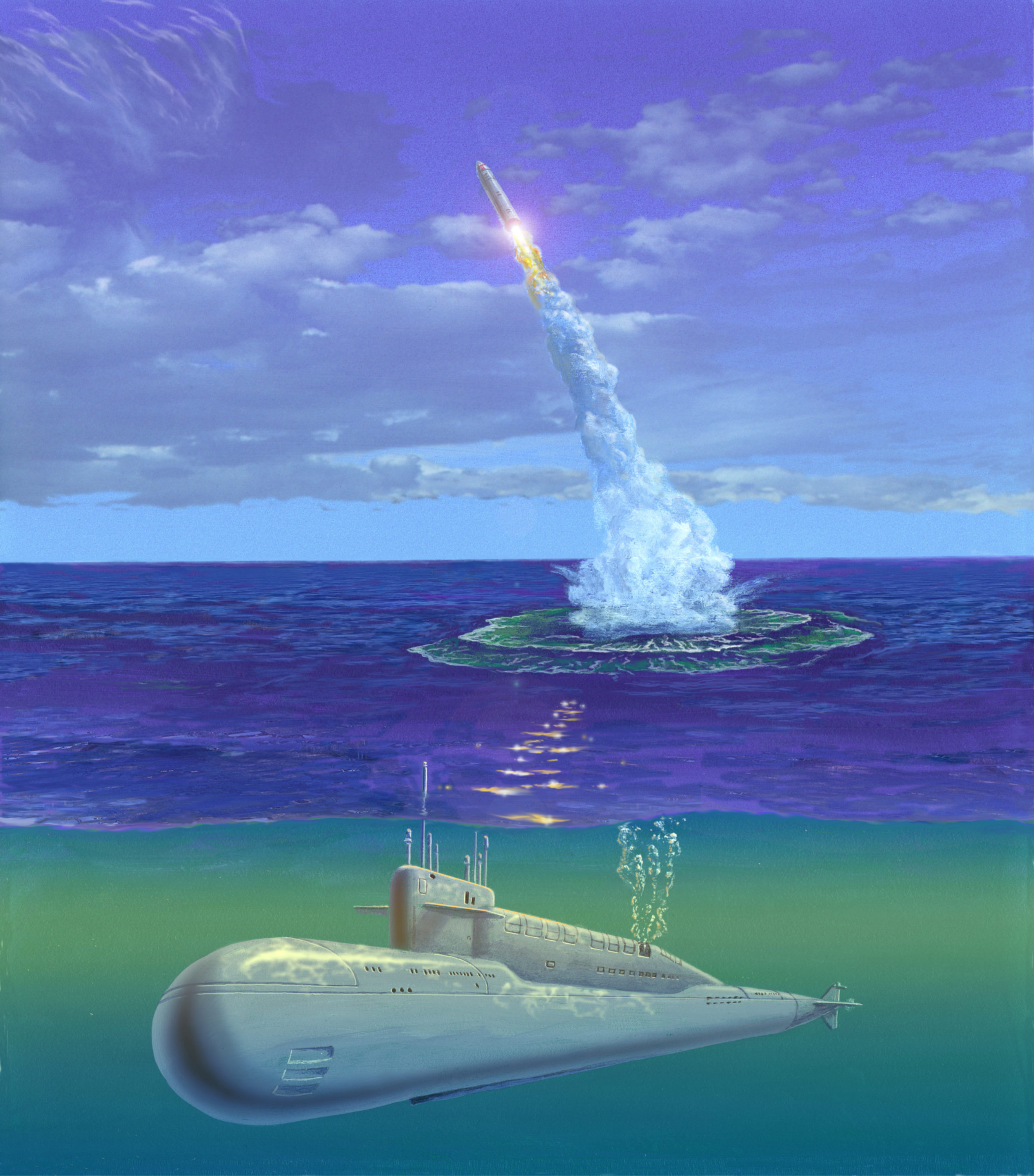
Our budget estimate (approximately $4 million) was large for The Planetary Society (our previous biggest projects, SETI and Mars balloons, were under $1 million), but small by space agency standards.4 But in addition to this being a fortuitous time with the offer of the free launch and for Russian-American cooperation, it turned out to be a fortuitous time for another reason: It was during the peak of the Internet “bubble.” Money was growing on metaphorical trees in the Silicon Valley and elsewhere among Internet startups.
Two entrepreneurs with Caltech roots, Bill and Larry Gross, created a startup incubator called Idealab near our home in Pasadena. One of Idealab’s early ventures was a space company called Blastoff!1 Blastoff! provided initial funding for a feasibility study of the Russian-launched, Planetary Society–managed Earth-orbiting solar sail project. After an intense review in Russia, we were convinced that the project was feasible and practical. We came back from our Russian review trip all stoked up to go ahead, only to find that Blastoff! had hired a new CEO, Peter Diamandis,6 who found the solar sail consideration too much of a diversion from their private lunar lander effort. He might have been right—we were selling the solar sail project to them as a low-cost opportunity for a reasonably fast (three-to-four year) space success while they tried to build up the much harder and bigger effort for the lunar mission. He had his hands full—in fact, too full. Blastoff! folded in 2001.
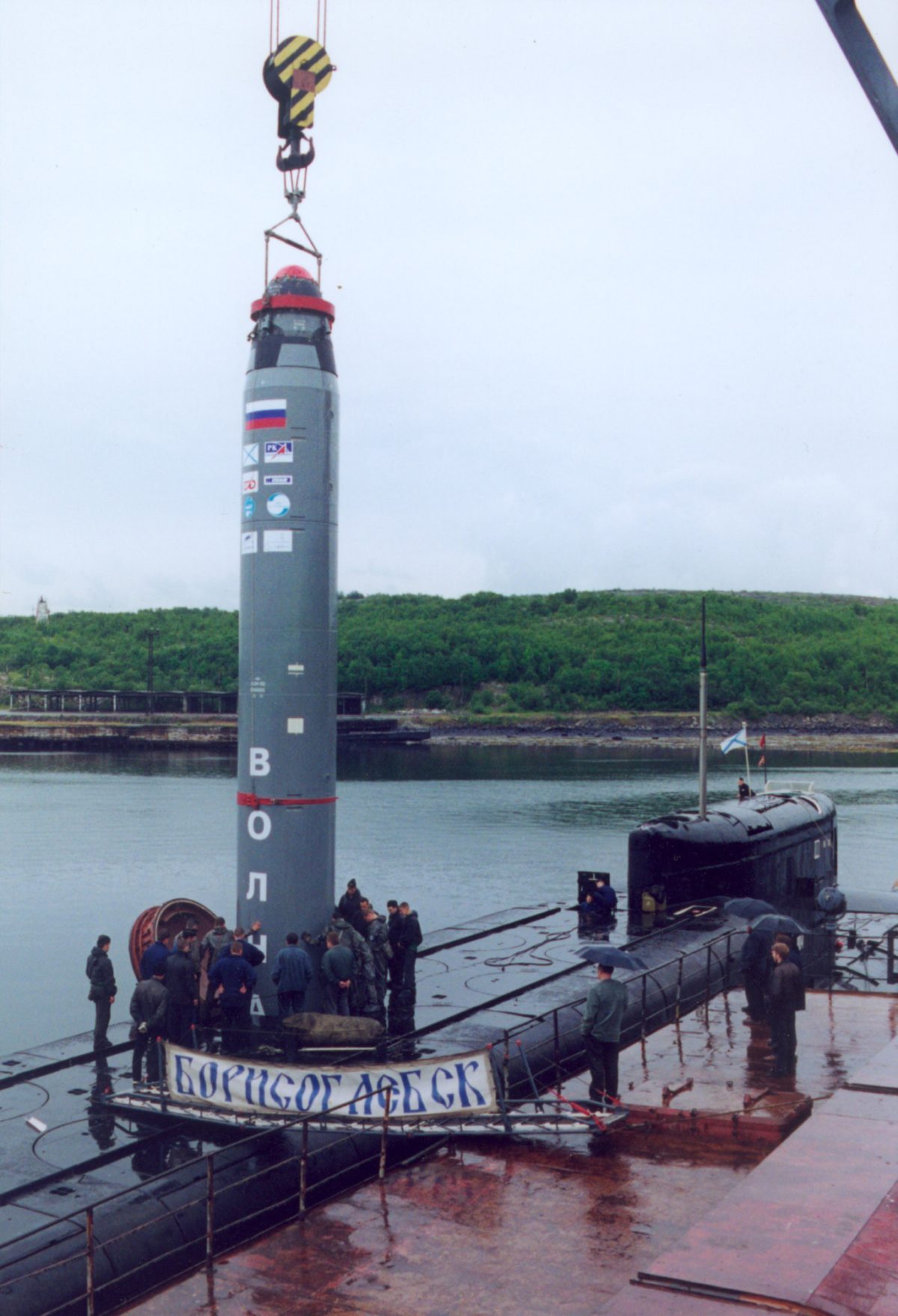
Another Internet entrepreneur, Joe Firmage, became very interested in our solar sail while he was creating a science-motivated Internet portal venture. Joe had a strong interest in astrophysics (including a self-described alien encounter experience) and a desire to support scientific inquiry into the questions of space exploration and the search for extraterrestrial life.
His new venture provided funding for The Planetary Society to support the creation of SETI@home, a popular, early citizen-based venture for the public to help analyze radio astronomy signals, searching the skies for possible extraterrestrial life. Joe then teamed with Ann Druyan, the widow of Carl Sagan, who was developing her own production company, Cosmos Studios. Ann, of course, had a strong interest in the solar sail and strong support for The Planetary Society. She and Joe saw the solar sail project as a great opportunity for their new partnership to create a breakthrough accomplishment and story for a Cosmos Studios media documentary. They committed to the solar sail venture led by The Planetary Society.
In honor of Ann and her new venture, and with a historical tip-of-the-hat to her and Carl Sagan’s extraordinary television series, Cosmos, we named our mission Cosmos 1. The Russians had their own series of Cosmos spacecraft going back to the beginning of the space age,7 and they did not like our name, but we had to point out to them that no one actually owned the name Cosmos and so we stuck with it. The “1” was stuck on because we intended this to be the first spacecraft to achieve solar sail flight.
In particular, that meant we had to fly in a high-enough orbit where atmospheric forces were negligible, that is, above 820 kilometers.8 What made our first-ever solar sail flight possible was being able to get a launch to this orbit, piggybacking on both the Russian military desire to convert ICBMs into commercial launch vehicles (a figurative “swords into plowshares” post–Cold War dividend) and the Russian aerospace industry development of inflatable structures for re-entry vehicles.
The Planetary Society had a long working relationship with the Space Research Institute (IKI) of the Russian (formerly Soviet) Academy of Sciences, and with the Lavochkin Association, a large aerospace company in the Russian space agency responsible for, among many other things, planetary spacecraft. Lavochkin and IKI had carried out all the Soviet planetary missions, and we worked especially closely with them during the development of the Venus-Halley (VEGA) mission, Phobos 1988, and Mars 1996 projects.
Lavochkin was now looking to develop commercial applications, among these an inflatable re-entry shield that could be taken to orbit and used to de-orbit old satellites or other orbit debris. Their inflatable design could be used to make inflatable booms that would deploy a solar sail.
Cosmos 1 was a clever design: eight triangular solar sails deployed and held rigid by inflatable booms (approximately 15 meters long). Motors at the apex of the sails on the spacecraft’s central hub allowed the sails to be individually tilted (actually in pairs with four motors, each controlling two of the triangular sails), which allowed the sail to be controlled in roll, pitch, and yaw and thus the spacecraft to be turned in any direction so that it could track the Sun.
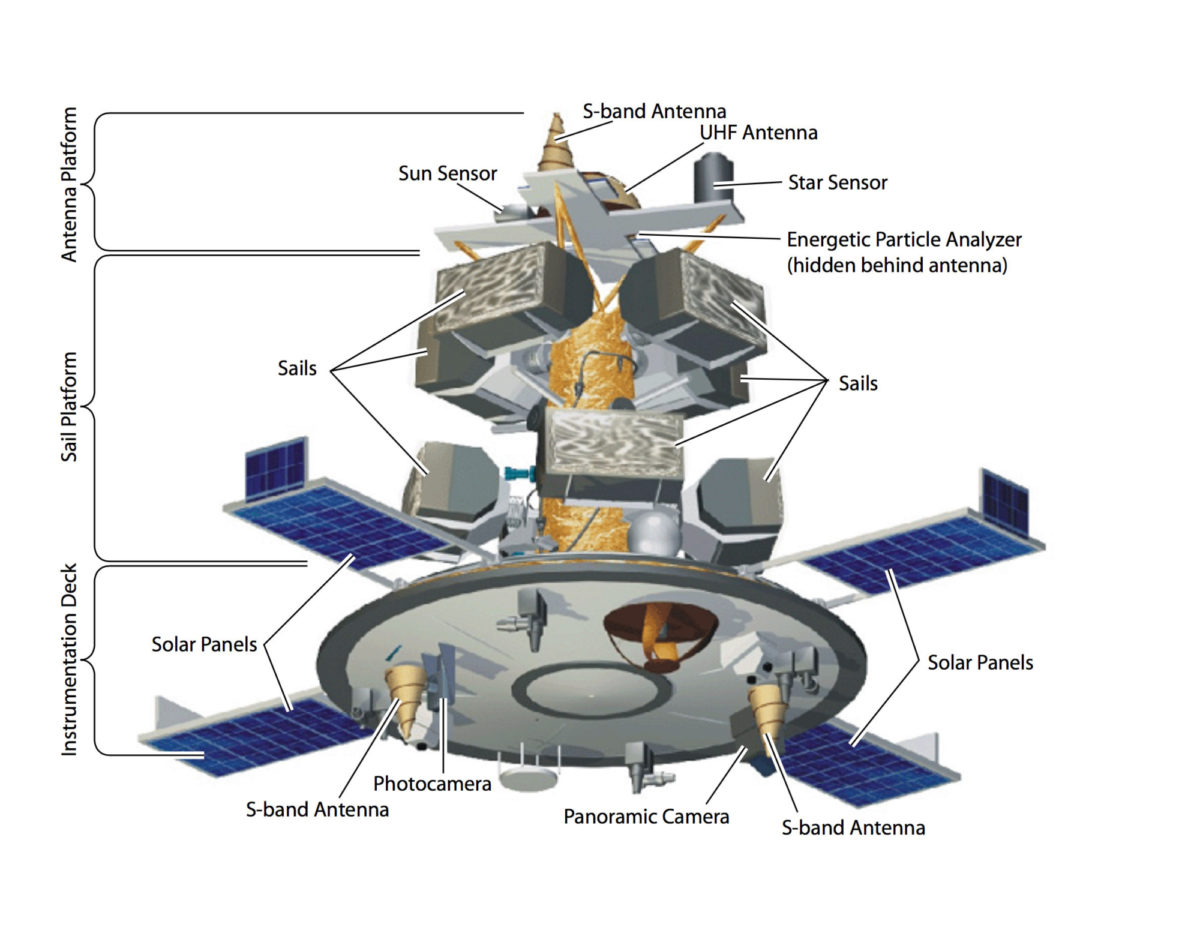
The spacecraft development was primarily Russian, although The Planetary Society provided expertise to oversee the project, contribute to the system design and assist on particular subsystem requirements, such as the spacecraft radio. Jim Cantrell, Harris M. “Bud” Schurmeier and I led The Planetary Society team, with the participation of other consultants from time to time. Cantrell had been working with The Planetary Society since his student days at Utah State University and had helped develop the Mars balloon before working on military and civil space programs in the aerospace industry. Schurmeier was one of the great NASA project managers, having led the Voyager and Galileo missions before becoming associate director at the Jet Propulsion Laboratory.
The Russians promised a two-year project schedule—which we knew was optimistic. It turned out to be five years, with more than one year lost due to what we thought was a free extra bonus test flight opportunity. In the first year of development, the Russians offered to build a scaled-down model of just the sail and its deployment system and fly it for free on a suborbital flight they were using to test their re-entry shield. We rushed off to Best Buy (a consumer electronics store) and bought some video cameras to mount on their spacecraft so we could video the deployment while at the apex of the suborbital flight.

The mission was launched on a Volna rocket out of a submarine from the Barents Sea, and the flight was to end in Kamchatka, where the capsule and the video would be recovered. Unfortunately there was an anomaly with the rocket (a euphemism for flight failure), and nothing was ever recovered. I, however, gained a unique experience being able to travel into the Barents Sea on a Russian navy ship (sailing out of Murmansk) to observe the submarine ICBM launch. A Cosmos Studios video crew accompanied me, gathering material for the Cosmos Studios’s planned documentary, and I provided real-time live commentary from the ship to The Planetary Society via satellite phone.
On this same trip I saw a nice demonstration of public interest in the future of human spaceflight. On the day before our attempted launch, we were walking around the city of Murmansk. At a kiosk on one of the main streets, I noticed a newspaper with an article about our upcoming solar sail launch. I bought the newspaper, and turning the page, I was delighted to see what I consider the best picture ever capturing the vision of solar sail flight. We’ve never been able to track down the artist or where he or she might have gotten his or her inspiration. The way it represents human spaceflight is why I like it so much.

The suborbital flight was attempted in July 2001. It took nearly a year to get a clear understanding of what had gone wrong with the Volna. Meanwhile, we returned to the building of our spacecraft—the test flight had been a diversion, and while either a successful or unsuccessful deployment would have been helpful to our engineering, the nil result from the rocket failure turned out to be a time delay and diversion of no help.
The spacecraft was finally built and readied for launch by the beginning of 2005. After final tests, reviews, the making of arrangements for worldwide ground station tracking and telemetry reception, and organizing mission operations, we set up a satellite control station in our Planetary Society office to maintain close contact and shared operation with the in-house, semi-secret one at Lavochkin (used for both military and civil satellites). Then, we scheduled the launch for June 21, 2005.
For this launch, I elected to stay in Moscow and go to the mission control center at Lavochkin with Bud Schurmeier. There, together with my longtime friend and colleague, Slava Linkin from IKI, who more than anyone organized the Russian effort to make this happen, we watched and witnessed the launch communications provided by the Russian armed forces responsible for the Volna launch and the initial radar tracking of the spacecraft to orbit. Jim Cantrell stayed at The Planetary Society to run the society’s mission operations activity and to maintain liaison with our members and the press.

On June 21, 2005, Cosmos 1 went into the sea when the first stage of the Volna failed 82 seconds after launch. We had produced and delivered the world’s first solar sail spacecraft, but it never got its chance to tell us how it would work.9 I was pretty disheartened. But The Planetary Society received many plaudits for a great effort—not just from the space community and world press but also from our members who had donated directly to the project. With strong member support we made a commitment to not give up.
The Story of LightSail, Part 1
The first installment of our three-part LightSail history series looks back at the origins of solar sailing and a NASA project to send a giant solar sail to Halley's Comet.
The Story of LightSail, Part 3
The final chapter of our three-part LightSail history series details how the loss of Cosmos 1 gives rise to the dream of solar sailing for CubeSats.
- Note 1: Our main focus, however, was advocacy, and by 1984 we were promoting international cooperation as part of that advocacy. In some ways our advocacy of Soviet-American cooperation was as risky as our advocacy of novel technical projects. Both were designed to create a movement for space exploration, not just individual achievements. ↩
- Note 2: “Purple pigeons” were so named in the attempt to create exciting and interesting space missions that were distinguished from “grey mice,” far more pedestrian proposals. The Comet Halley solar sail was one of the purple pigeons, as were a Titan probe and Mars rover/sample return. ↩
- Note 3: They actually offered two free launches by including a suborbital flight for us to test the sail deployment system. When that flight failed (not our sail test, but the launch vehicle itself), it cost us time and money to deal with the problems, reminding me of the punny aphorism, “there is no such thing as a free launch.” ↩
- Note 4: A couple of years later NASA proposed an equivalent mission with about the same objectives and proposed capabilities for about $85 million! ↩
- Note 5: Blastoff!’s company goal was to fly a private lunar lander and commercially sell data products from the mission. It attracted a top technical team, but ultimately had to be abandoned when the cost of achieving meeting the mission objectives exceeded the amount that could be raised by private investors. ↩
- Note 6: Diamandis later went on to fame as the XPrize founder, and creator of the Ansari XPrize for the first privately funded human spaceflight—a suborbital flight in 2004. ↩
- Note 7: The first Kosmos (the usual spelling for the transliteration) flew in 1962. More than 2,000 Kosmos spacecraft (both military and civil Earth orbiters) have flown since. ↩
- Note 8: Although space is said to begin at an altitude of 100 kilometers above the Earth’s surface, true disappearance of the atmosphere does not begin until much higher altitudes. The atmosphere is heated by solar radiation, and the actual altitude where the number of molecules becomes negligibly small varies depending on solar activity—it can be as low as 650 kilometers and as high as 900 kilometers. To properly plan a mission above the atmosphere, one has to account for the solar activity and predict it. ↩
- Note 9: While launch failures are part of the space business and occur all too frequently in the United States as well as in Russia (and elsewhere), our bad experience with the Russian company who manufactured that rocket led us to give up on the idea of accepting even free launches on their converted ICBMs. They offered; we refused. ↩


 Explore Worlds
Explore Worlds Find Life
Find Life Defend Earth
Defend Earth


